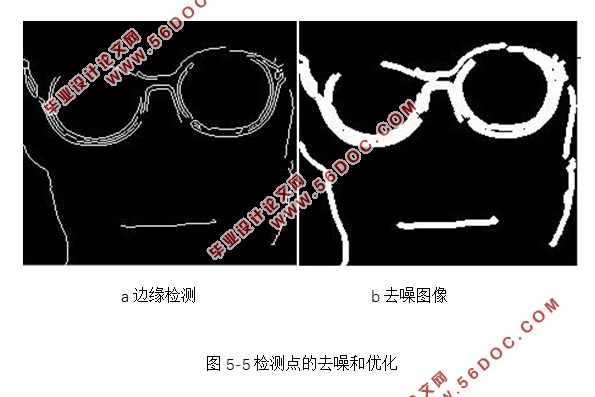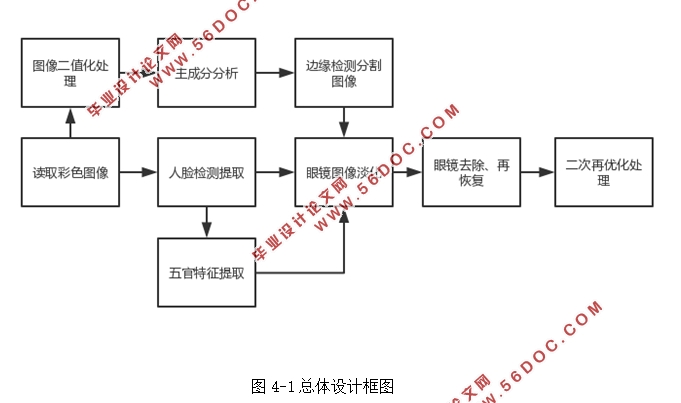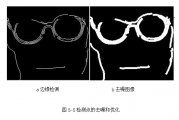基于神经网络的人脸识别及眼镜图像处理的研究
来源:56doc.com 资料编号:5D21019 资料等级:★★★★★ %E8%B5%84%E6%96%99%E7%BC%96%E5%8F%B7%EF%BC%9A5D21019
资料以网页介绍的为准,下载后不会有水印.资料仅供学习参考之用. 密 保 惠 帮助
资料介绍
基于神经网络的人脸识别及眼镜图像处理的研究(论文15000字)
摘要:人脸识别技术是一项重要的生物特征识别技术,近年来在公共信息、安全识别、人机交互等领域大显身手,数字移动电话机的应用技术拓展,相机镜头的追踪识别,此项技术已应用于生活的方方面面。本文研究图像降维法——主成分分析,采用以深度学习为特点的神经网络为理论基础,读取人脸图像并提取人脸轮廓模型的多维特征点,研究BP神经网络模型,讨论基于不连续亮度检测方法。并介绍闭函数处理、二值化处理和数学形态学等方法,具体论述眼镜检测与边框去除的模型和方法。再恢复图像处理阶段,运用形态学方法,进行不同眼镜框性能分析,展现最优化的样本示例,最后阐述本课题的后续研究。
关键词:人脸识别;神经网络;眼睛去除再恢复;多维特征提取
Research on Face Recognition and Glasses Image Processing Based on Neural Network
Abstract:Face recognition technology is an important biometric recognition technology. The application technology of digital mobile phones has been expanded, and the tracking and recognition of camera lenses has been applied. In all aspects of life. In this paper, we study the image dimension reduction method-principal component analysis, using the neural network characterized by deep learning as the theoretical basis, reading the face image and extracting the multi-dimensional feature points of the face contour model, and studying the BP neural network model. Continuous brightness detection method. The methods of closed function processing, binarization processing and mathematical morphology are introduced, and the models and methods of glasses detection and frame removal are discussed in detail. The image processing stage is restored, and the common pixel points around the eyelid are extracted, and the image around the eyelid is filled and filled, and the expansion and corrosion of the morphological method are applied, which is mainly used to fill the boundary cavity groove point, and remove the edge impurity or burr convex. The starting point, finally shows an example of glasses image processing, and describes the follow-up study of this topic.
Key words:Face recognition; neural network; eye removal and recovery; multidimensional feature extraction


目录
1. 绪论 1
1.1 研究目的和背景 1
1.2 相关领域国内外现状 2
1.3 本文主要研究内容与组织 2
2. 神经网络模型构建和图像分割基础实验 4
2.1 神经网络模型在图像处理中的应用 4
2.2 神经网络进行人脸检测的优点 5
2.3 RGB图像和索引图像的表示方法及分量图像的提取 6
2.4 图像分割基础概述和检测技术的基础实验 7
3. 人脸轮廓形状模型与五官特征点提取方法 11
3.1 图像处理的降维法——主成分分析 11
3.2 五官的提取方法 12
3.2.1 特征点提取范围的设置 12
3.2.2 图像阈值分割 13
4. 软件实现步骤分析 14
4.1 总体设计框架 14
4.2 眼镜边框的定位及提取 14
4.2.1分类器——眼镜轮廓提取 14
4.2.2 闭函数处理和数学形态学在图像处理中的应用 15
4.3 眼镜边框部位图像修复 17
4.3.1 YCbCr颜色空间转换与高斯肤色分布模型 17
4.3.2 眼镜边框位置图像插值计算方法 18
4.4 眼镜框提取批处理程序 19
5. 程序性能分析和测试案例 19
5.1 眼镜框样式对镜框提取的影响 19
5.2 最优化样本——白种人深褐色全框眼镜 21
6. 结论和展望 24
6.1 结论 24
6.2 讨论 24
参考文献 25
致谢 26
|





